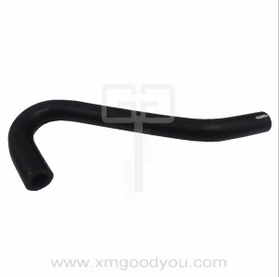Today, I simply introduce hose. It is also important in hydraulic and other process applications. Flexible Hydraulic Rubber Oil Hose must match the highest pressure capable in a hydraulic system, which is typically the pressure the pump provides. However, there can certainly be pressure increasing components in machines that can go much higher than the hydraulic relief or a pump pressure capacity, especially when a pressure intensifying cylinder is flow generated. Special attention must apply when designing systems with geared flow dividers because of this effect.
Braided rubber oil fuel hose usually have a burst rating of 4 times the pressure rating so although a lower rated hose can work for a short time, they will fatigue and then fail in a shorter time. It's a good idea to then look at the failed hose to make sure it will match the hydraulic flow circuit pressure ratings. Sometimes people can simply make a hydraulic hose assembly from the wrong type of hose and won't realize it only until failure. This can happen even from the factory.
High pressure hydraulic lines for mobile equipment usually come in a few number of pressure ranges. There are exceptions to this, especially with hose manufacturers trying to crack into market share by offering different benefits to their customer. 6000 psi pressure rated hose can be typically found on closed loop hydro-static circuits such as trackground drives and higher horsepower drives used on drillers, trenching equipment, etc.
Next, there is the 4000-psi Rubber Fuel Hose that is used on some of the open loop piston pumping systems involved in manufacturing. The most common hydraulic hose found in industry is the 3000 psi rated hose, which is common with gear pumping circuits used in correlation with high pressure cylinders and gear motor systems. There are many hoses 1500 and lower psi ratings for the return lines and other special case applications. Most of these hydraulic lines are used to supply the valves and then return back to oil coolers, hydraulic filters, and the oil reservoir. If you wonder, why not use the highest pressure hydraulic hose on everything in an oil circuit; it's because of the higher cost.
Hoses expand with every pressure cycle. These hoses usually have a crimped steel end also called a hydraulic fitting. Fatigue failure of a hose will typically happen near the hose end as the rubber hose and the steel fitting hose end will expand at their different rates. The hydraulic hose end can also be susceptible to an incorrect crimp process if the crimping technician is not trained. Steel hydraulic lines are not going to be as flexible as hydraulic hose, so be careful to not preload any component that they are connected to when mounting the steel line to the machine.
During manufacturing, hydraulic hose is the last thing done to a machine when being built. When technicians and engineers are hurried and under work pressure to meet deadlines, it is the hydraulics and hydraulic hose that usually suffer. Overtime, after complaints come back in from the customer or if you have a good technician, they can route the hydraulic hoses and fittings to give the best service of the components.
In addition, it is important to note that careful attention should be made as to how hoses will lay while in service. For example, is your machine following the minimum bending radius? Are your hydraulic hoses clamped into place so to prevent the rubbing that occurs when under pressure? When you are routing hydraulic hoses through a structure that pivots can you prevent these hoses from undergoing strain? Will your hoses clear obstructions, other pinch points, and will not be subject to unnecessary rubbing? Have you made your hose as short as possible to reduce wear? Can you change a crimp hydraulic hose end to provide better routing? Have you eliminated as many twists as possible? It is necessary to pay close attention to these questions when you are designing your hose system.
For additional information for hydraulic hoses, hydraulic fittings, and hydraulic steel adapters, please visit xmgoodyou.













